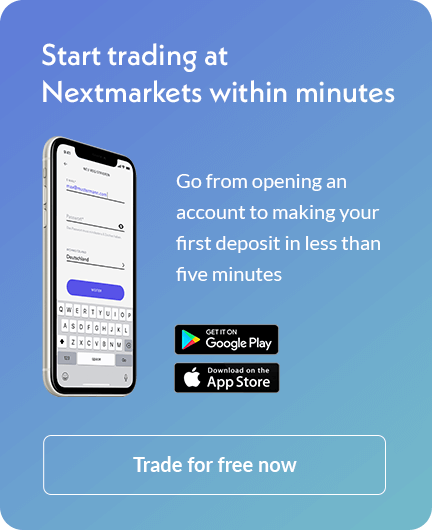What is price action?
When it comes to forex trading, speculating on the future movement of a currency pair is a multi-facet process. Price action is the movement of a currency pair’s price over a set time period and forms the basis of technical analysis.
While there are many tools available to the forex trader, many short-term day traders will exclusively rely on price action to determine trends and use this technical analysis to inform all their decisions. If a forex trader wants to see whether a price has moved up or down, price action strategy is the perfect method.

Price action
Price action is a relatively simple term – it is basically the study of an asset’s price movement. Simple right? Price action is a fundamental component of a trading strategy as it is the historical study of the price of a currency pair. Historical price studies provide forex traders with the ability to identify where the market could move next, based on previous movements and trends.
Price action is observed and interpreted using different charts that plot forex prices over a set time frame. Using different compositions of charts, forex traders can identify likely trends, reversals and breakouts. No chart is better at providing forex traders with a visualisation of the market than candlestick charts.
Candlesticks
No it’s not a wax stick to light your home or a dark evening. So what is a forex candlestick pattern? Candlesticks are named after their appearance and were originally used by Japanese rice traders before being brought to the western world.
Candlesticks provide forex traders with different information regarding currency price movements and help forex traders make informed decisions. Candlesticks plotting form candlestick patterns such as the Harami Cross or Engulfing pattern. Candlestick trading can be applied to any market and is an important skill for technical forex trading.
If you want to trade forex based on technical information, then you’ll need to analyse price charts. Typical forex charts use candlesticks rather than traditional bar charts. Technical traders use candlestick information to shape their opinion on trends, entry points, and so much more. Analysing candlesticks is one of the most efficient ways of identifying forex price action.
Candlesticks explained
A candlestick is made up of three specific points; the open, close, and wicks. Candlesticks are colour coded and turn green if the close price is higher than the open and turn red if the close price is below the open. Let’s say you have your chart set to a daily candle setting while trading USD/JPY– Each candle would represent one day where the open price would be the first traded price for that day and the close price would be that of the last price traded.
Open price: The first traded price at the creation of the candle.
High price: This is the top of the upper wick of the candle. This will be the open price of a bearish candle or closing price of a bullish candle, in the instance that no upper wick is present.
Low price: This is the bottom of the lower wick of the candle. In a similar fashion to the high price, if there is no lower wick, the low price will be the open price of a bullish candle and the close price of a bearish candle.
Close price: The close price is the last price traded during the creation of the candle.
Advantages of candlesticks
As the most visual and informative of the forex charts, candlesticks are the most popular among those conducting price action trading.
- Forex price movements are displayed more distinctly than other charts and are therefore easier to perceive.
- Price action and price patterns are most easily observed on a candlestick chart.
- There is more pricing information provided in a candlestick chart compared to a line chart.
What is support and resistance?
Two very important terms in forex trading and probably one of the most widely adopted concepts by forex traders. Support and resistance provide forex traders with a better understanding of when to enter and exit a chosen market.
Imagine a price level is rising. The point in which the price stops, changes direction and starts to fall is what is known as ‘resistance’. Forex traders consider this point to be a ceiling that prevents prices from rising any higher – hence the term resistance. Forex traders observe ‘support’ as when falling prices stop, change direction and start to rise once again. In this case, support is seen as the floor that supports the price and prevents it from dropping further.
During an uptrend, resistance levels would typically indicate a surplus of sellers whilst support levels typically indicate a surplus of buyers. This is reversed during a downtrend. Understanding what support and resistance is allows forex traders to conduct trading in two distinct ways:
Trading the bounce
This way of trading occurs when buying at the point the price falls towards support and selling when the price rises back towards resistance levels. Essentially, instead of buying straightway, someone trading the bounce on trade EUR/USD might wait until the price bounces off the support level before entering a position. Conversely, when going short a trader would wait until the price begins to return off the resistance level before going short on a currency pair position.
Trading the break
Trading the break is when a forex trader buys when the price breaks through the resistance levels and sells when the price breaks through the support levels. A break refers to when a price has the momentum to break through the respective support or resistance level. When this occurs, a trader can either choose to play it conservatively, such as taking a long position on trade GBP/USD and hoping for a bounce, or aggressively by backing the trend to continue.
It is very important to remember that support and resistance are not exact numbers and it is entirely up to the forex trader to interpret whether support or resistance levels have genuinely been broken.
Price action trading
Price action is not necessarily a trading tool, such as indicators, but rather an important data source to be used in combination with trading tools. Price action trading shouldn’t be entirely reliant on technical data either – traders need to be vigilant of trading volume, trading periods, and other additional factors.
So how do I actually find forex price action signals? With the right tools, which can be found within the best forex trading app, forex traders can determine forex price action in 3 easy steps:
Step 1
Firstly, forex traders need to open a new chart and draw key support and resistance levels. This will include many different chart patterns such as ascending and descending channels, trend lines, or horizontal areas.
Step 2
Patience is very much a virtue in forex trading – when trading the daily time frame, you absolutely must wait for the daily session to close. The closing prices are the most important number when conducting price action trading. This is because it is the truest representation of the battle between bullish and bearish movement and best identifies which currency won the session.
The most common daily close charts are the GMT and New York close charts. The New York session has the most market impact and ends each day at 17:00 EST. If you’re really serious about forex trading then New York is the superior chart.
Step 3
Now it’s time to watch for forex price action buy and sell signals. This is where your candlestick patterns will come in handy – most commonly in either pin bar or engulfing form. The pin bar is particularly useful for acquiring profit. A pin bar is the candlestick pattern featuring a long upper and a lower wick.
Limitations to price actions
New forex traders need to remember that trading price actions is a speculative game and it’s very common for two traders to interpret price action differently. Price action is subjective, one trader’s bearish downtrend may be seen as another trader’s turnaround.
To make informed decisions and be sure of the interpretation of movement, forex traders need to apply other tools to confirm their trading prediction.
Price action trading limitations
GMT v New York charts: Many professional traders will attest that the type of charts you use to determine forex price action can have a significant effect on your trading performance. We’ve already established the importance of looking at the closing price of the New York session, but using the GMT chart can send mixed signals and a whole lot of unwanted confusion.
Each candle, in the GMT chart, opens at precisely 00:00 GMT which means a grand total of 6 daily candles created per week. That actually means you’ll often see a minor ‘Sunday’ candle, unlike the New York chart that offers 5 candles. The GMT chart is messy with either redundant or entirely unnecessary candles.
New York charts, on the other hand, provide 5 candles during the week that equate for the closing price of each New York session. As you know, closing prices are vital to forex price action trading and as such, you need the most accurate charts possible. The GMT chart suffers from providing closing prices that do not paint an accurate picture of the forex markets.
Ultimately, the decision is up to the forex trader who can always access a forex demo account to test which suits them best.
Our final thoughts
There are many tools available for forex trading but few are as powerful as price action. Price action trading forms the basis for many different trading strategies and is, arguably, the simplest way to speculate on price movement.
Since every trading indicator is based on price, it is vital that every forex trader learns and understands price action trading. Charts such as candlesticks offer forex traders a greater insight into their chosen market. Whether a long-term trader or short-term, knowing how to read the price of a currency pair will greatly aid in successful speculative forex trading.




